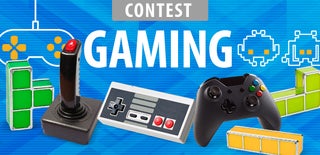Introduction: Poor Man's Portable RetroPie Gaming Console
I love video games. I like to be able to bring them anywhere I go to play them. But, I've got a problem. I don't have too much money to be spending on video games. That's why I took one of the things I love(video games), made it portable, and did it all on a budget. This is my Poor Man's Portable RetroPie Gaming Console!
Step 1: Things You'll Need
To make anything, you'll need parts. Here's the cheapest things I found:
- A Raspberry Pi
- A battery(I like this one. It's really cheap too)
- A screen of some sort(I highly recommend this one*, it's 5 inches(12.6cm). I found a 7 inch(17.64cm) one, and a 10 inch(25.2cm) one.)
- A micro/SD card(it depends on which version of Raspberry Pi you use. If you use one that takes micro SD cards, I highly recommend this one. It's really cheap for the storage.)
- A controller/keyboard(I highly recommend using a controller. You can use something like a USB Nintendo 64 controller)
- A box of some sort(I'm using a cardboard box, but if you can use something like wood, that would be much better.)
- An extension cable of some sort for the battery(something like this.)
- A wifi dongle(optional, but will really help. And they're cheap)
Let's get started on building it.
Step 2: Preparing Your SD Card
This step is very important. In order for it to work, you need to put the operating system on it. You can head on over to http://blog.petrockblock.com/retropie/ to get started. They have all the information you'll need to put RetroPie on your SD card. If you got the same screen as I did(the 5 inch resistant touch screen), you'll need to download this file and extract it to the root of your SD card.
Step 3: Setting It Up
Alright, once your SD card is all set up, you can start assembling your "multi-console system." What I did was I first took my screen and pushed it down on the Raspberry Pi to connect the pins to the screen(make sure that they line up properly). Then I added my HDMI connector that came with the screen. I plugged the micro USB cable into the Raspberry Pi, then into the battery. I have some duct tape on my battery because it would short out connections on the Raspberry Pi. Then I plugged the micro USB to female mini USB cable into the battery. This will be used as an extension cable for charging. I just so happened to find the perfect sized box, then I put the battery and Raspberry Pi inside. I marked where the screen was, also the USB ports and where the extension cable will be. Then, I cut these pieces out. I fed the female end of the extension cable through the hole at the top you see in picture 7. To power it on, I actually used a piece of a kebab stick to press the button... I know it's not the best but it works. I made a hole for the kebab stick to go through.
Step 4: Testing and Playing
Alright! It's really shaping up! Now we need to connect a controller. I used a PlayStation 2 controller connected via a USB adapter. You can use any controller you want, as long as it's USB or through the GPIO pins. Then you can add roms through FTP or a USB flash drive(at least I think the flash drive). You can get more help with all of this at http://blog.petrockblock.com/retropie/. Now let's play!
Step 5: Things I Would Change/Do Over
In the case of any project, there are mistakes you make. Like one thing I'd like to do over is what I put it in. Sometime I might make a wooden case. If I won the Full Spectrum Laser Contest, I would use the laser cutter to cut the pieces for the case. The screen I chose is really cheap for what it is, but it consumes quite a bit of electricity using up the battery faster than with a better screen. At the time I made this the Raspberry Pi Zero wasn't out yet, so it might have been better to make it with that(considering that it's only $5). Well that's all. Have a great day.

Runner Up in the
Pi Day Challenge 2016

Participated in the
Gaming Contest

Participated in the
Raspberry Pi Contest 2016

Participated in the
Full Spectrum Laser Contest 2016













